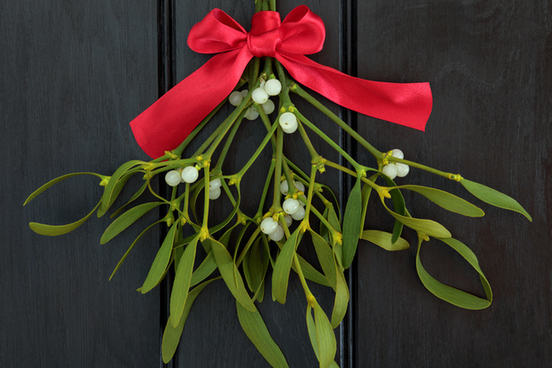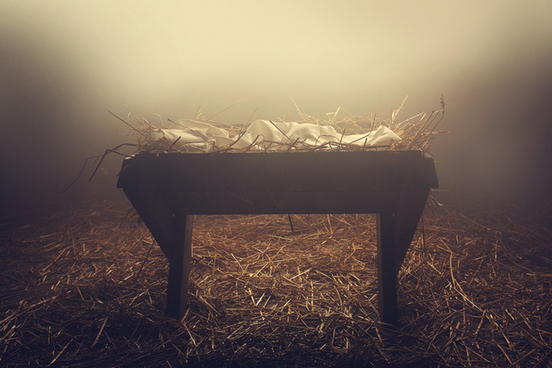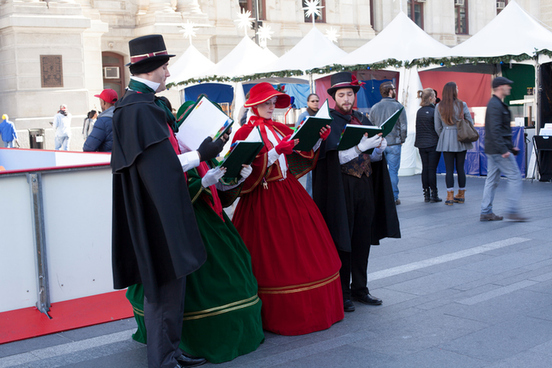
Sugarplum
'Twas the night before Christmas, when all through the house / Not a creature was stirring, not even a mouse; / The stockings were hung by the chimney with care, / In hopes that St. Nicholas soon would be there; / The children were nestled all snug in their beds; / While visions of sugarplums danced in their heads…
After reading these lines from Clement Moore's 1823 poem "A Visit From Saint Nicholas," more commonly known as "'Twas the Night Before Christmas," have you ever wondered why the children would be dreaming of a sugar-coated fruit—as opposed to candy canes or chocolates—on Christmas Eve? Truth be told, a sugarplum is not a plum at all—it is a small round or oval hard candy made from sugar. Traditionally, it is made by hardening sugar around seeds, nuts, or spices in successive layers, and it likely got its name by the end result being similar to the size and shape of a plum. The candy was especially popular during the 17th through the 19th centuries.
Knowing that a sugarplum is essentially a mass of sweet sugar also clears up why the Land of the Sweets in the second act of The Nutcracker is ruled by the Sugar Plum Fairy.

Mistletoe
Mistletoe is a combination of mistel—which itself was once used as a name for the shrub—and the Old English word for "twig," tān. (The loss of the final "n" in the modern form, mistletoe, is from confusion with another tān, the plural of toe.) The exact origin of mistel is as equivocal as the origin of the kissing tradition associated with mistletoe. The word is thought to derive from one of two earlier words: Germanic mist (a word for "dung") and Germanic mash ("a mixture of malt and water that forms wort to make beer and whiskey"). The etymological argument for mist is based on the fact that mistletoe is spread by the droppings of birds that have eaten the berries, whereas mash suggests the stickiness of the shrub's berries. Whatever the case may be, we believe we have at least temporarily dispelled the romance of being caught under the mistletoe and its berries.

Gingerbread
You may be surprised to learn that the bread part of gingerbread is not related to the baked and leavened food. The Middle English predecessor of the word was gingebred, and it referred to a kind of ginger paste that was used in cookery and as a medicinal preparation. Gingebred was borrowed from Medieval French gingebrat or gingembrat, a derivative of gingembre, "ginger." The bread ending of the modern form came to be by folk etymology, whereby unusual words are altered to resemble more familiar words.
It was in the 15th century that gingerbread began to be used for the cakes, cookies, and breads that we associate with the word today.
You’ll find the largest gingerbread pirate ship in the world in the lobby of the Ritz-Carlton in Amelia Island, Florida. A team of eight pastry chefs put together this 17-foot long boat using more than 600 pieces of gingerbread. There’s even an edible fondant crew on board!
— Mary Honkus, People (people.com), 5 Dec. 2019

Plum pudding (or Christmas pudding)
Despite its name, dried fruit is really what gives traditional plum pudding its sweetness. Noah Webster defined plum pudding as "pudding containing raisins or currants," and at his entry for pudding, he added "sometimes enriched with raisins and called plum-pudding." The word plum is used in the name because plum once meant "raisin." That sense traces back to the late 1600s. It developed from the increasing use of raisins and currants as substitutes for dried plums—or rather prunes—in recipes. The use of plum for a raisin gradually fell into disuse over the centuries, but it has been immortalized in the names of traditional "plum" dishes. Besides plum pudding, there's plum pottage, plum frumenty, plum porridge, and plum broth—all dishes sweetened with raisins or currants—not to mention the plum pie of Little Jack Horner fame.
The other half of plum pudding also has an unexpected meaning. Originally, pudding referred to what is essentially a sausage—a mixture of meat, cereal, spices, and often blood, stuffed into intestines or the stomach, and boiled. Over the years, the word was extended to other similar food mixtures that were boiled, and finally to things that were baked. Nowadays, it is usually lip-smacking images of sweet soft or creamy desserts that come to mind when we think of pudding—and not scenes from the abattoir.

Eggnog
Fog-drams i' the' morn, or (better still) egg-nogg, / At night hot-suppings, and at mid-day, grogg...
Those words are from a pastoral poem by Jonathan Boucher in his Glossary of Archaic and Provincial Words (written circa 1775) and were said to be "drawn from the life, from the manners, customs and phraseology of planters … inhabiting the Banks of the Potomac, in Maryland." Boucher defines fog-drams as "drams resorted to on the pretence of their protecting from the danger of fogs" (or, in other words, "drinks to clear your head") and egg-nogg as "a heavy and unwholesome, but not unpalatable, strong drink, made of rum beaten up with the yolks of raw eggs." Boucher was a clergyman and philologist who intended his glossary to be a supplement to the dictionaries of Noah Webster and Samuel Johnson, and in the case of eggnog, his intentions are appreciated. He may have provided us with the first use of eggnog in print.
The nog in eggnog is of unknown origin, but we know that the word has been used since the 17th century for a strong ale, especially one brewed in Norfolk, England. We raise a glass to Humphrey Prideaux, a "Sometime Dean of Norwich," for using it in a letter dated 1693 to John Ellis, a "Sometime Under-Secretary of State," providing us with a clue to when the word was first used.

Bough
When you hear "Deck the hall with boughs of holly," shoulders and body limbs definitely don't come to mind. However, bough was once used in Old and Middle English as a word for "shoulder" and "leg."
Seyne bowes of wylde bores with þe braune lechyde. [Then legs of wild boars, with the flesh cut into slices.]
— Morte Arthure, circa 1400
The word is related to the Old High German buog of the same meaning and Sanskrit bāhu, a word for "forearm." The transference of anatomical bough to a branch of a tree is unique to the English language, and both senses of the word were used contemporaneously. A similar occurrence is the contemporaneous uses of limb for a leg or arm as well as a tree branch.
Rob Gatchell and his family spend weeks pulling the decorations out of the shed and from inside Gatchell’s workshop. They then use tractors, vertical lifts, and special equipment to spread Christmas cheer over every bough on every tree in the family’s Oak Bluffs front yard.
— Lucas Thors, The Martha's Vineyard Times, 4 Dec. 2019

Spruce
A common Christmas tree is the spruce. The tree's name was once used in English as a name for the country of Prussia; that use originated as an alteration of the Anglo-French name for the country, Pruce. A number of goods imported from the country—spruce canvas, spruce iron, spruce leather—were all very well-thought-of. Perhaps the most important of these Prussian, or Spruce, products was the spruce tree, a tall, straight conifer that was especially desirable for use as the mast of a ship. About the middle of the 17th century, Spruce as a name for the country was largely supplanted by Prussia. But by this time spruce had become well established as the name of the tree.
The origin of the adjective spruce, meaning "neat" or "trim," is less clear. It may come from spruce leather, of which fine jerkins (a tight vest-like garment in style at the time) were once made. English author Thomas Nashe in 1593 wrote of "a Broker, in a spruce leather jerkin with a great number of golde Rings on his fingers." And dramatist Thomas Dekker in 1609 mentioned "the neatest and sprucest leather." The verb spruce as in spruce up is derived from this adjective.

Crèche
"She wrapped him in swaddling clothes and laid him in a cratch." That may not sound like a familiar translation of Luke 2:7, but back in the 1300s, the substitution of cratch for manger probably wouldn't have raised any eyebrows. Back then spelling was imprecise, and several different words and spellings, including cratch, cracche, crache, and crecche, were used to describe a trough for holding feed for livestock or to identify the manger where Jesus was laid. By the late 18th century, crèche (which we borrowed from French and now sometimes spell without the accent mark) had displaced those older forms, and the word had lost its former "manger" meaning, coming to refer instead to a representation of the Nativity scene itself.
In the 19th century, crèche took on secular meaning as a word for a day nursery, and in the early 20th century, scientists borrowed the term for a group of young animals, such as penguins or bats, of different parentage that are cared for collectively by one or more adults, like at a day care.

Carol
The word carol is believed to derive from Late Latin choraula, a word for a choral song that was earlier applied to a musician who accompanied a chorus on a reed instrument. That Latin word can be traced to the Greek verb choraulein, meaning "to accompany a chorus on a reed instrument," which itself is a combination of choros ("chorus") and aulein ("to play a reed instrument").
In Medieval times, carol, or carole, referred to a round dance with singing done by the dancers during pagan celebrations, such as May Day and the Winter Solstice; the word was also used for the song to which they danced. In opposition to these pagan carols, Christians began writing their own religious songs during the late Middle Ages—mainly for the celebration of Christmas—giving us the sense of carol we are familiar with today.





